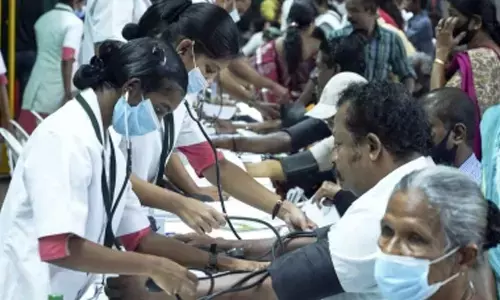Sherpas victimised in Himalayan black snow

Sherpas victimised in Himalayan black snow, \"A few more whacks of the ice axe in the firm snow, and we stood on top,\" stated Sir Edmund Hillary about his final climb - the first by mankind - to the top of the Everest
"A few more whacks of the ice axe in the firm snow, and we stood on top," stated Sir Edmund Hillary about his final climb - the first by mankind - to the top of the Everest, a feat accomplished exactly 61 years ago on May 29, 1953.
.jpg)
Come 2014, the snow on the ascent is no longer as firm as it then was. Global warming due to emission of green house gases is causing a "grand melt" all over the globe - from Antarctica to the Arctic to the Andes to the Alps. The Himalayas are no exception. Even worse, this thaw is accelerating due to the deposition of black carbon - micro particles emitted in the atmosphere due to incomplete combustion of fossil fuels like diesel and biomass used for cooking and numerous other applications.
Such black carbon particles, which form "brown clouds", can travel amazing distances across the globe along with the atmospheric currents and can affect even unsoiled regions like the Himalayas. Travelling from the atmosphere above the rich diesel consuming and fuel-burning countries, these clouds deposit black carbon on the snow making it dirty. Such dirty snow absorbs more sunlight and the subsequent melt accelerates at surprising speed.
A 2013 paper of the National Academy of Science stated that glaciers in the Alps began to retreat abruptly in the mid-19th century, when they should have instead advanced as per the reconstruct of the temperatures at that time. This has long been a paradox to glaciologists and climatologists. The culprit: industrial black carbon deposition began to markedly increase in the mid-19th century.
Ever since the successful climb by Edmund Hillary and Sherpa Tenzing Norgay, more than 4,000 climbers have now scaled the 29,028 ft. summit of Everest. Climbing the Everest has become more of recreational tourism rather than spirited adventurous exploration. The poor sherpas, who play the role of "shadow climbers", service nearly 800 climbers from the rich world using their money power. They work a full summer season of 4-5 months for $2,000-$5,000 per sherpa as against a rich climber who spends about $75,000-$100,000 for each climb.
The risks encountered by the sherpas are increasing due to accelerated melting of infamous Khumbu fall, which is at the head of the Khumbu glacier - a slow moving mass of ice on Everest's slope at around 6,000 meters. It has to be traversed from Base Camp to Camp I. Khumbu Glacier is now moving faster due to underneath melt and posing a life threatening risk for the sherpas, who have to frequent between Base Camp and Camp I. The job of rich climbers is made easy by the services provided by sherpas.
The Khumbu glacier moves slowly but the large crevasses open their fatal jaws with little warning. The huge towers of ice now found at the icefall have been known to collapse unexpectedly. Blocks of ice the size of SUVs and even helicopters roll down out of blue. It is now estimated that the glacier is advancing faster - about one meter per day - down the mountain and dislocating the firm ice that Edmund Hillary found in 1953.
There is a clear divide between those who cause the damage and those suffer the consequences. Like disposable consumer products, the rich climbers are treating the sherpas as disposable men. When the sherpas revolted after the tragedy in April when 16 were killed in the Khumbhu icefall, mainly for the pathetic compensation offered to them, all the rich climbers quietly wrapped their equipment and left for their homes - to continue their emissions business-as-usual. This "state of being apart" has created "climate apartheid".
The least but the most fitting action Western climbers should take is to declare higher compensation for sherpas, show them dignity and pledge to reduce black carbon emissions, which will provide early and immediate benefits in delaying the melt and reduce the risks of climbing. Of course such efforts should be complementary to reducing the emission of carbon dioxide.
A Nepali teacher in the school in Kumjung, about 4,000 meters above sea level in Sagarmatha National Park run by the Sir Edmund Hillary Foundation, told me when I visited the school: "Sir Edmund Hillary, when he reached the summit of Everest, took a photo of Tenzing Norgay standing on the summit but did not agree for Tenzing to take his own photo. Though Hillary reached the summit first, he always said that it was collective effort. He not only cared for a sherpa's dignity but worked relentlessly and passionately for their wellbeing through his foundation."
Such exceptional thinking has not stopped today's climate apartheid. It is accelerating. Like the melt of glaciers - and needs to be halted.
Next Story
















